Southern Arizona's diverse microclimates significantly shape its viticulture, creating unique wine terroirs. From lower altitude warm climates ideal for fuller-bodied wines to higher elevation cool regions producing subtle flavors, these variations influence grape variety and winemaking styles. Winemakers leverage this geological diversity to craft distinctive regional wines, contributing to the area's renowned terroir and attracting both local enthusiasts and national connoisseurs.
In the heart of southern Arizona, a diverse landscape presents a unique challenge and opportunity for winemakers: microclimates. This article delves into how these localized weather patterns shape wine terroirs, creating distinct, microclimate-driven wines. From the high desert to lush valleys, we explore the art of grape growing in extreme conditions and its impact on the thriving southern Arizona winery scene. Prepare to taste the territory and discover why these region-specific wines are gaining consumer preference.
- Understanding Microclimates and Their Impact on Wine Terroirs
- A Landscape of Diversity: Southern Arizona's Unique Wine Regions
- The Art of Grape Growing in Extreme Conditions: Challenges and Opportunities
- Tasting the Territory: Profiling Microclimate-Specific Wine Characteristics
- Exploring the Market: Southern Arizona Winery Scene and Consumer Preferences
Understanding Microclimates and Their Impact on Wine Terroirs
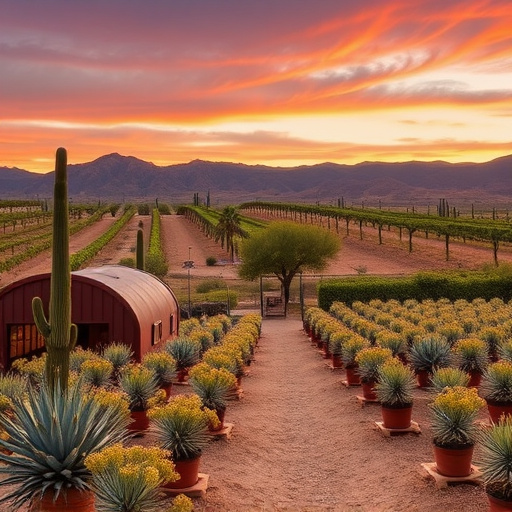
In the intricate world of viticulture, microclimates play a pivotal role in shaping the unique characteristics of wine terroirs. These localized climate zones, often distinct within regions like southern Arizona, significantly influence grape growing and wine production. Each area possesses its own set of environmental factors—temperature variations, sunlight exposure, wind patterns, and humidity levels—that create distinct microclimates. As a result, wines from different parts of southern Arizona can exhibit varying flavors, aromas, and structures.
For instance, the valleys and slopes of southern Arizona’s terrain can foster diverse microclimates. Lower-altitude regions generally experience warmer temperatures, promoting earlier grape ripening and potentially contributing to richer, fuller-bodied wines. In contrast, higher elevations often offer cooler climates, slowing down ripening and allowing for a greater concentration of acidity and subtle flavors in the grapes, which translates into more delicate and complex wines. Understanding these microclimates is crucial for southern Arizona wineries as it enables them to select grape varieties and cultivation practices best suited to their specific terroirs, ultimately shaping the region’s diverse and distinctive wine portfolio.
A Landscape of Diversity: Southern Arizona's Unique Wine Regions
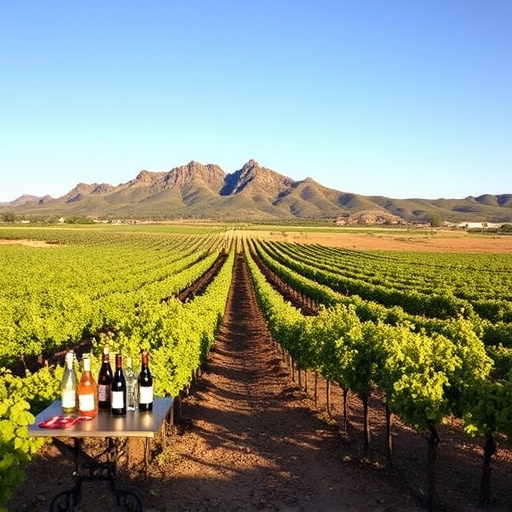
Southern Arizona is a land of diverse landscapes, and this diversity translates into unique wine regions, each with its distinct terroir. From the cool highlands to the hot desert floors, the state offers a microclimate mosaic that supports an array of grape varieties and winemaking styles. The vast expanse of southern Arizona wineries showcases the region’s ability to nurture a broad spectrum of grapes, from the heat-loving varieties like Grenache and Syrah to the cooler climate favorites such as Riesling and Chardonnay.
This geological and climatic diversity provides winemakers with a canvas upon which they paint their artistic expressions. Each wine region, be it the high-altitude fields around Willcox or the valley floors near Tucson, imparts its own character onto the grapes, resulting in wines that reflect the specific terroir. Exploring these southern Arizona wineries allows enthusiasts to embark on a sensory journey through the state’s varied landscapes and discover the distinct flavors each has to offer.
The Art of Grape Growing in Extreme Conditions: Challenges and Opportunities
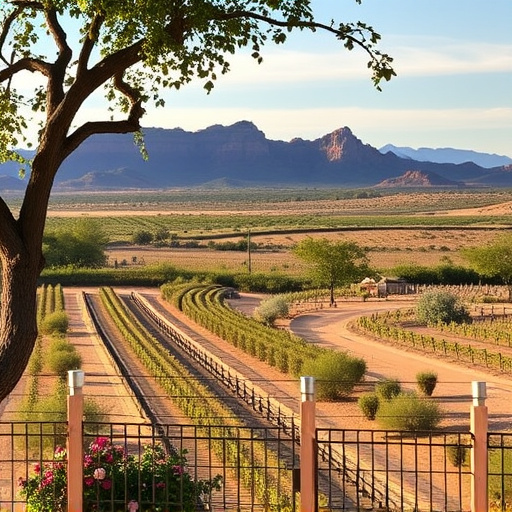
In the heart of southern Arizona, winemakers are crafting unique and exquisite wines by harnessing the power of microclimates. Grape growing in this region presents a fascinating interplay between challenge and opportunity. The extreme conditions, characterized by scorching summers and crisp winters, demand meticulous care and innovative techniques from vintners. Despite these hurdles, the diverse terroirs of southern Arizona offer distinct characteristics that contribute to the complexity and allure of the resulting wines.
The art of cultivating grapes in such environments requires an understanding of microclimate dynamics. Winemakers must carefully select grape varieties adapted to specific conditions, employ advanced irrigation systems, and implement sustainable farming practices. These strategies ensure optimal vine health and fruit quality, ultimately leading to the production of distinctive wines that reflect the unique signature of each southern Arizona winery.
Tasting the Territory: Profiling Microclimate-Specific Wine Characteristics
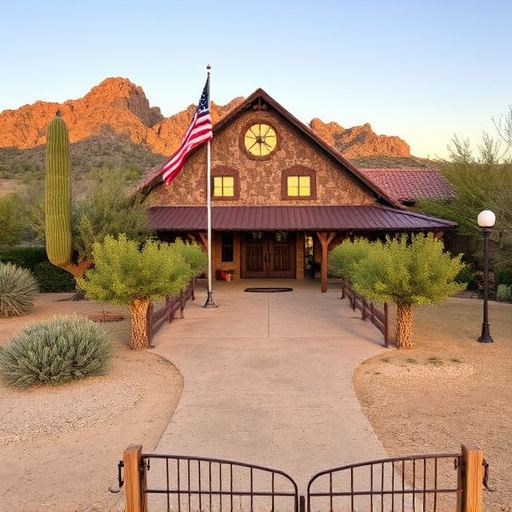
Tasting the Territory offers an immersive journey into the unique characteristics that Southern Arizona’s diverse microclimates impart on its wines. Each terroir, shaped by factors like elevation, aspect, and local flora, contributes distinct flavors and aromas to the grapes. Wine enthusiasts can expect a symphony of sensations when exploring these microclimate-driven wines, with each bottle telling a story of its origin.
From the rolling hillsides of Tucson to the desert plains near Yuma, Southern Arizona wineries showcase the region’s dynamic landscape in every glass. These microclimates not only influence grape ripening but also foster a remarkable range of wine styles, from crisp and bright white wines that dance on the palate to robust red blends with complex layers of flavor. Embracing these nuances allows wine lovers to connect more deeply with the territory, appreciating both the art of winemaking and the natural wonders that sustain it.
Exploring the Market: Southern Arizona Winery Scene and Consumer Preferences
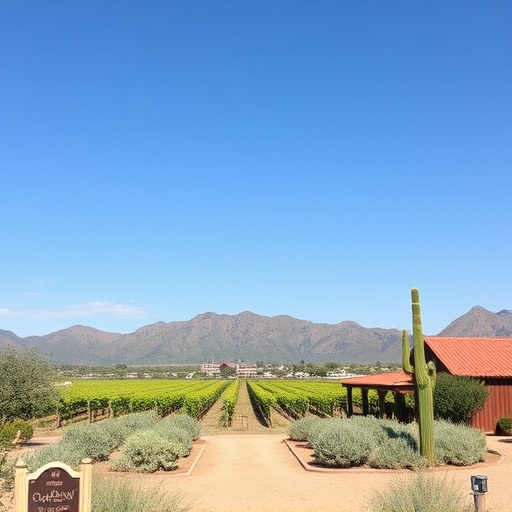
The southern Arizona winery scene is a vibrant and diverse ecosystem, where microclimates play a pivotal role in shaping the unique terroirs of the region. With varying elevations, exposure to sun, and wind patterns, each vineyard benefits from its own distinct climate, resulting in a captivating array of wines. This microclimate-driven approach has not only attracted local enthusiasts but also piqued the interest of wine connoisseurs nationwide.
Consumers are increasingly drawn to these regional specialties, seeking out southern Arizona winery offerings that showcase the area’s terroir. The market demand for such niche products presents an exciting opportunity for local producers to differentiate their brands and capture a dedicated customer base. By embracing the unique characteristics of each microclimate, winemakers can produce wines that resonate with consumers who appreciate the subtle nuances and distinct flavors these terroirs offer.
Southern Arizona’s diverse microclimates offer winemakers a fascinating canvas to paint distinct terroirs, resulting in a vibrant array of wines. This article has explored how each region’s unique temperature and rainfall patterns influence grape growing and wine characteristics. From the arid desert to cooler mountain areas, these microclimates foster specific grape varieties and cultivation techniques. The thriving southern Arizona winery scene showcases this diversity, with consumers increasingly seeking out microclimate-driven wines that reflect the region’s distinct terroir. By understanding these subtle differences, wine enthusiasts can fully appreciate the intricate flavors and stories behind each bottle, making southern Arizona a must-visit destination for wine lovers exploring beyond traditional wine regions.
